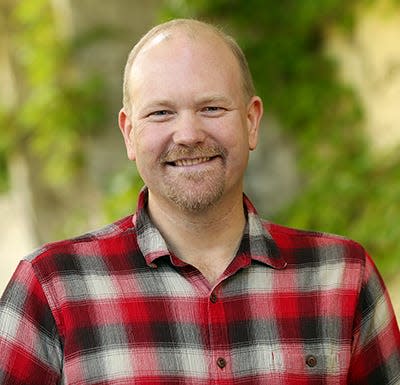What we can learn from eco-thriller 'Soylent Green' 50 years on
- Oops!Something went wrong.Please try again later.
The 1970s was the golden age of eco-thrillers, films and books that imagined not-too-distant futures in which the environment was so badly damaged that life as we knew it had become impossible. The greatest of these is unquestionably the 1973 film "Soylent Green," which envisions a grim future in which most people have lost hope.
A product of its time, "Soylent Green" reflected the chief environmental and social concerns of its day: pollution, overpopulation, starvation, violent crime, social inequality and ecological collapse. It also happened to be set in 2022. So now, midway through that year, we can look back on "Soylent’s" predictions to consider just how accurate it was.
Harry Harrison’s 1966 novel "Make Room! Make Room!," on which the film was based, was primarily concerned with overpopulation and the grossly unequal distribution of wealth. Published just two years before Paul and Anne Ehrlich’s "The Population Bomb," the nonfiction bestseller that triggered a global panic over human population growth, Harrison’s novel was among the first to imagine the impacts of an unchecked humanity.

"Soylent Green" expanded on his work, following a story involving Charlton Heston as a police detective in New York City and his analyst partner, played by Edward G. Robinson in his final film appearance before his death in 1973. The basic narrative is a crime procedural, as Heston’s character investigates the murder of a wealthy individual under suspicious circumstances, at each stage exposing the viewer to another aspect of a world caught up in a slow apocalypse.
From the vantage of 1973, the distant 2022 would become a world in which people were literally packed together like sardines — 80 million of them living in New York City alone, the masses without homes or indoor shelter. Food would be scarce due to industrial pollution of the air, water, and soil; all but the wealthy would subsist largely on a sort of nutrient cracker distributed by the powerful Soylent corporation. Crime would be unavoidable, as society teetered on the brink of collapse and only the wealthy could afford private security. Women would be reduced to sexual objects or even property controlled by men. The elderly would be a burden, most of them shipped off to government-run euthanasia centers where they could enjoy a final moment of peace and beauty before dying. A few rich, powerful men and corporations would control the fate of everyone, all in a world beset by unrelenting heat produced by global warming.
Of course, many of these predictions were wrong. While demographers did warn of runaway population growth in the late 1960s, the rate of growth slowed soon after as access to birth control, education for women and increasing prosperity combined to lower birth rates. Though regional famines still occurred, the agricultural bounty of the Green Revolution helped avert mass starvation. In the U.S., bold legislation, including the Clean Air Act, Clean Water Act and the Endangered Species Act, tempered the worse of our environmental ills. Society did not collapse and the elderly were not sent off to euthanasia facilities en masse.
But ultimately "Soylent Green" — and many of its Hollywood kin – got some things right. Inequality and gross disparities in power, wealth and privilege remain at the heart of our society. Crime rates improved dramatically in the 1990s — in tandem with economic opportunity – but are on the rise once again. Corporations control more of our lives, the products we consume, and even the flow of ideas and information than we should be comfortable with. And of course climate change, which we now understand to be more than just the simplistic “global warming” of the 1970s, looms over our children’s future as a threat of existential magnitude.
So, what’s to be learned from these old eco-thrillers? Not only "Soylent Green," but of course other classics like "The Omega Man" (1971), "Silent Running" (1972), "Logan’s Run" (1976), and the children’s television program "Ark II" (1976) warned of the dire consequences of environmental destruction and societal decay. While some of their predictions proved inaccurate, others we avoided only by taking decisive action. As "Soylent Green" turns 50 we’d still do well to heed its warnings — as fiction all too often has a way of becoming fact.
— This is the opinion of Times Writers Group member Derek Larson. He teaches history and environmental studies at The College of St. Benedict and St. John’s University and his column appears monthly. He welcomes your comments at twg@anderson-larson.net.
This article originally appeared on St. Cloud Times: What we can learn from eco-thriller 'Soylent Green', 50 years on